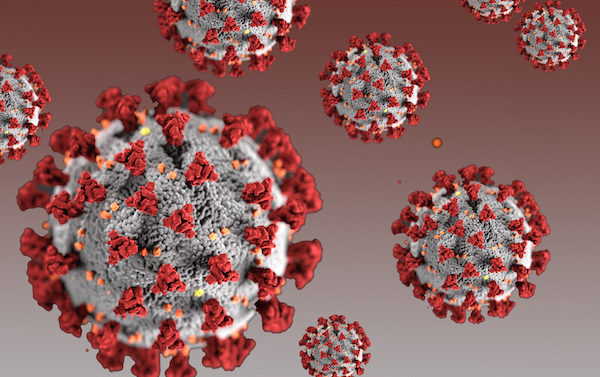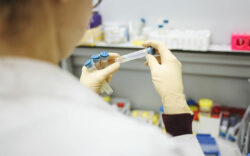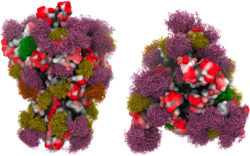Public health officials are urging the public to remain vigilant in wearing masks, maintaining social distance and handwashing as we go into the holiday season and brace for the impact of Thanksgiving gatherings. Recent data from the Georgia Department of Public Health shows continuing community spread in Athens-Clarke County, rising cases in many surrounding counties and a significant increase in hospitalizations for the region in the past week.
As of Dec. 3, Athens-Clarke County had 6,869 confirmed cases, 283 hospitalizations and 55 deaths. That’s an increase of 492 cases, 15 hospitalizations and four deaths over two weeks. The seven-day moving average, which gives us the best idea of how much cases are increasing, is up from 26.3 on Nov. 19 to 38.4 on Dec. 3.
In addition, rapid antigen testing data shows there have been 1,327 likely cases for Athens-Clarke County, in addition to confirmed cases, an increase of 144 cases in the past two weeks. Combined, 8,196 Athens residents have tested positive since the pandemic began.
Amber Schmidke, a public health microbiologist who has been monitoring the COVID-19 situation in Georgia, points out in her daily newsletter that the data for the week of Thanksgiving and the week after the holiday may be skewed because of labs being closed for several days and a test processing backlog as a result.
According to wastewater data from Erin Lipp’s lab at the Center for the Ecology of Infectious Disease at UGA, concentrations of the virus continue to show community spread. The lab’s website notes that elevated levels of the virus in sewage preceded the uptick in cases last week.
Despite many UGA students having gone home for the rest of the semester, as the remainder of classes this semester are online, some students are still in town and on campus. To that end, UGA is still offering surveillance testing through Dec. 23 at the Legion Field testing site, and the University Health Center is also still offering testing for symptomatic students. The university will also continue to release weekly data reports each Wednesday. In total, for the week of Nov. 16-22, there were 101 positive cases among students, faculty and staff, and 71 for the week of Nov. 23-29.
In the week prior to Thanksgiving, more than 5,000 students participated in surveillance testing, exceeding the goal of testing 1,000 students a day in anticipation of students going home. Of the 5,116 asymptomatic tests for the week of Nov. 16-20, there were 38 positive cases for a positivity rate of .75%. For the week of Nov. 23-27, there were 17 positive asymptomatic cases out of 2,021 total tests, for a positivity rate of .8%.
Just as the pandemic has highlighted and magnified systemic weaknesses and problems in many areas, health care is no different. The closure of rural hospitals and the stress it has increasingly put on larger regional hospitals has been happening steadily across Georgia and much of the South for the last 20 years. Now, in the face of the pandemic, we’re seeing just how much stress these hospitals are under.

The COVID-19 hospitalization rate for Region E, which includes St. Mary’s and Piedmont Athens Regional, is nearly the same as it was at the height of the summer surge. COVID-19 hospitalizations have shown a significant increase in the last week, with 40 additional hospitalizations from Nov. 26-Dec. 3. Of the 643 patients in the region as of Dec. 3, 126 patients, or 19.6% of all patients, were hospitalized for COVID-19. On top of the increasing COVID-19 hospitalizations, ICU capacity is still at a premium, with 68 of 70 beds, or 97%, in use as of Dec. 3.
In a meeting with hospital CEOs, the Athens-Clarke County Chamber of Commerce, Mayor Kelly Girtz and other officials this week, hospital administrators said they were seeing more cases and there was more community spread occurring. Further, they stressed the point that some in the public may be letting up in their vigilance because the prospect of the vaccine is so close to a reality at this point.
Administrators also presented a timeline of how vaccine distribution would occur here locally once approved. With distribution in three phases, the first phase would go towards vaccinating health-care workers. Administrators said they could begin vaccinations for staff as early as this month, once one of the three potential vaccines is approved for emergency use, but no one yet knows just how many doses they’ll get initially. The second phase of vaccinations would likely start in February and would go toward vulnerable populations, and the third phase of vaccinations for the general public could be available as early as April.
Despite the prospect of vaccines, St. Mary’s President and CEO Montez Carter noted that it won’t be a “magic bullet.” Observing public health measures will still be important in the foreseeable future.
Like what you just read? Support Flagpole by making a donation today. Every dollar you give helps fund our ongoing mission to provide Athens with quality, independent journalism.










